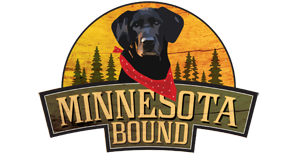47 degrees Cloudy Wind 9mph N
A chilly morning.
A lead gray sky.
And waves bouncing the loon up and down.
But there he sits. Faithfully keeping those precious two eggs warm and safe. Protected under the warmth of his body and his feathers.
The next time you see the loon get up and roll the eggs or when there is a nest change, watch to see how the loon settles down on the eggs.
As they prepare to settle down on the eggs, they will use their beak to roll both eggs toward the back of their body between their legs. And then they will do this little 'wiggle' of their rear end to get just the right position on the eggs.
Most birds have what is called a 'incubation patch' or a 'brood patch'. This is an area of bare skin on their breast that allows body heat to be transferred more efficiently to the eggs. In some birds where only the female incubates the eggs, only the female develops the brood patch. In other species where both the male and female sit on the eggs, both of them will develop the brood patch.
In some birds, a change in hormones when the eggs are laid, makes some of the feathers fall out on their own. In some birds, the bird helps the brood patch develop by pulling out some of its own feathers.
But loons are different.
As you have seen, they do not keep the eggs up near their breast. They keep the eggs near the back of their body.
Loons have and/or develop an area near the back of their body that has an abundance of blood vessels close to the surface. This large amount of blood is what enables them to efficiently warm the eggs without having a brood patch.
I still remember last summer when we surgically implanted the satellite transmitters in several loons, that the veterinarian doing the surgery commented how many blood vessels there were in this area. This is the area where the satellite transmitter was implanted.
So when the loon gets on the nest, it carefully rolls the eggs back toward this area. Then is rocks its body back and forth to make sure that this area makes the maximum amount of contact with the eggs.
After it has settled on the eggs, it will lower its wings so that they make contact with the nest. This effectively seals out the cold air from all sides.
But the loon is not done yet!
It carefully overlaps its wingtips over each other thereby sealing off any cold air from the back as well.
But the loon is still not done making sure that it is providing a nice warm environment for the eggs.
As a last step, the loon raises its tail as it crosses the wingtip. Then when the wingtips are crossed, it lowers its tail feathers effectively 'locking' everything in place. A very ingenious way of constructing a warm incubator that is impervious to wind and rain and even snow!
The egg roll that the loon does when it gets on the nest or when it gets up and moves, also serves another purpose. If the eggs remained in one position all the time, the egg yolk could gradually rise to the top of the egg. As the chick developed inside the egg, the blood vessels could actually stick to the shell as they developed. That would kill the chick.
So the loon 'knows' that it has to continually roll the egg to keep that from happening!
Watch for each of the little motions the next time you watch one of the loons settle down on the eggs. Little miracles that for the most part go unnoticed by the casual observer. Remember, that once again you are watching things that the best researcher around has never had the opportunity to observe this closely.
Questions or Comments? LoonCam@yahoo.com

